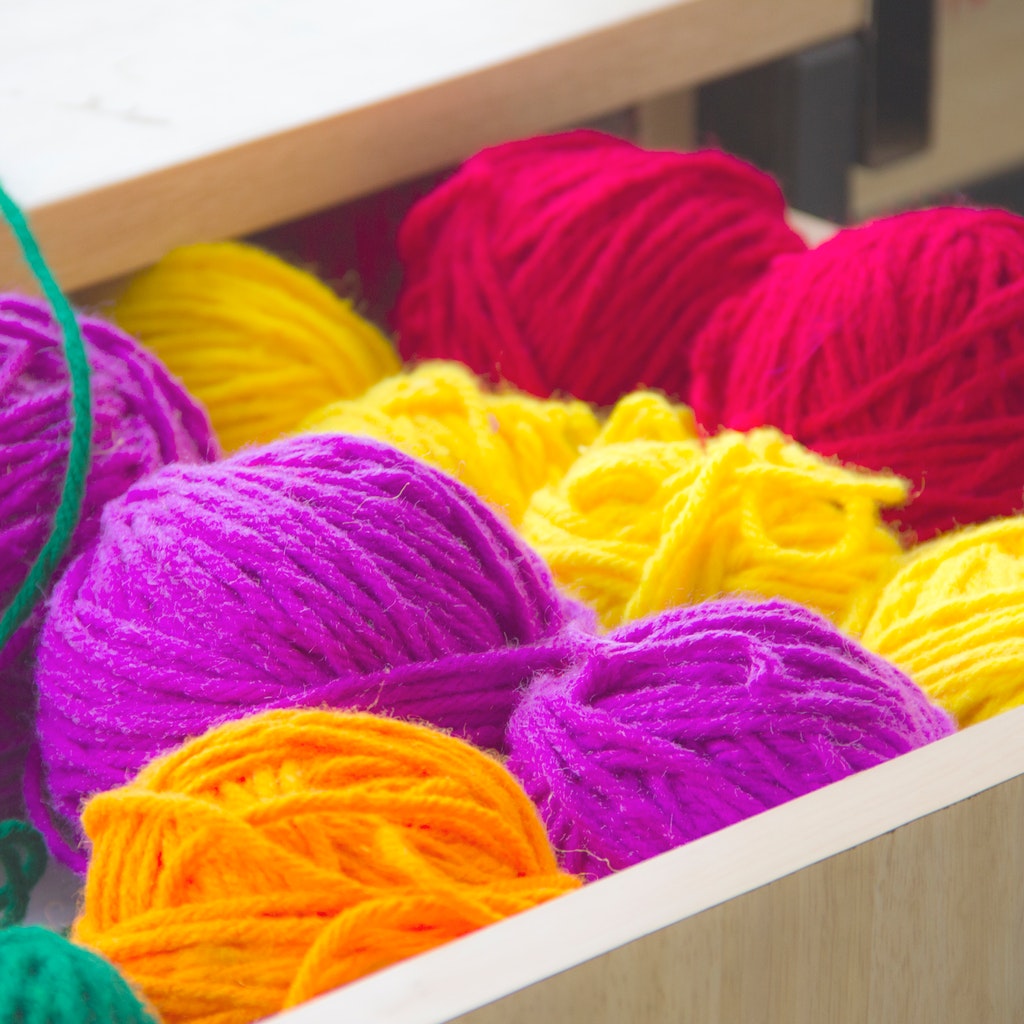Yarn Weight
Lets start with a brief review of yarn weights. If you have worked with yarn at all you know that there are many different kinds of yarn. Most patterns will suggest a certain type of yarn and weight of yarn. However, what if the pattern doesn’t give any specifics? How can we know what weight yarn to use? Thankfully, the Craft Yarn Council has helped with just that problem.
According to the Craft Yarn Council; “the publishers, fiber, needle and hook manufacturers, and yarn members of the Craft Yarn Council have worked together to set up a series of guidelines and symbols to bring uniformity to yarn, needle and hook labeling, and to patterns, whether they appear in books, magazines, leaflets or on yarn labels.” Their goal is to make it not only the industry standard but easier for all to select the right yarn for the right project. They go on to say that they urge “manufacturers, publishers, and designers to adopt these guidelines.” This tremendously helps out us knitters and crocheters. By making the labeling standardized it helps us know what size yarn to pick for what project as well as what size knitting needles or crochet hooks to use. Below is a graphic illustration of the American yarn weights available today.

What size is the gauge for your knitting machine?
Your machine should tell you what gauge it is when you purchase it. I know for the Addi knitting machines that the gauge is set for DK or worsted medium weight yarn. You can run lighter weight yarn through the machine. The gauge remains the same, so with a lighter weight yarn the result will have a more open weave to the fabric. If you want a tighter weave and still want to use a lighter weight yarn you could use double or triple strands of a lighter weight yarn. As long as the strands fit under the hook of needle and the machine will catch the threads it should work. Some novelty yarns work well as well (Eyelash, ribbon, etc.). Bulky weight yarns such as #5 can be used but it is hard on the machine and the person would need to go slowly and make sure all needles are catching the yarn. Bulky yarns tend to leave a more fiber residue and may result in the machine needing more frequent cleaning. Very thick chunky yarns #6 or above are not suggested and should not be used.
What is Yarn Ply?
Yarn Ply is different from yarn weight. Yarn ply is related to the thickness or layers of strands woven together to create yarn. According to the Merriam Webster dictionary the word ply in relation to yarn means; “yarn made by twisting together two or more strands that are often different in fiber and color.”
In theory, two-ply yarn, for example, is composed of two single strands while three-ply yarn is composed of three single strands. The purpose of plying yarn was to increase strength and stability of not only the yarn but the finished product. Below is an image that might make this clearer.

I always have many scraps of yarn laying around. Sometimes they are old and I can’t remember what I used them for or where I bought them. There are many ways to remedy this and the easiest is to keep the original packaging with the yarn. But this isn’t always practical or easy because I may have just a tiny bit left or a small ball of yarn left. Trying to figure out what weight/ply the yarn is can be difficult by feel alone. I came across a web site called Love Crafts (https://www.lovecrafts.com/en-us/c/article/how-to-figure-out-yarn-weight). The article was on how to figure yarn weights. It stated that the “yarns per wrap” method could be used to figure out the yarn weight. Basically you wrap your unknown yarn around a pencil making sure that the strands are touching, but not overlapping. Then count the number of wraps per inch and compare to the following:
- Lace or 2 ply: 35 or more
- Light fingering, sock, or 2 ply: 22 – 34
- Fingering or 4 ply: 19 – 22
- Sport: 15 – 18
- DK: 12 – 17
- Worsted or Aran: 9 – 11
- Bulky or Chunky: 8 – 10
- Super Bulky or Super Chunky: Anything that has 7 or less wraps per inch

Well that sums up yarn weights and ply. I hope this topic was helpful and interesting. As always I appreciate your feedback and look forward to your comments.

























